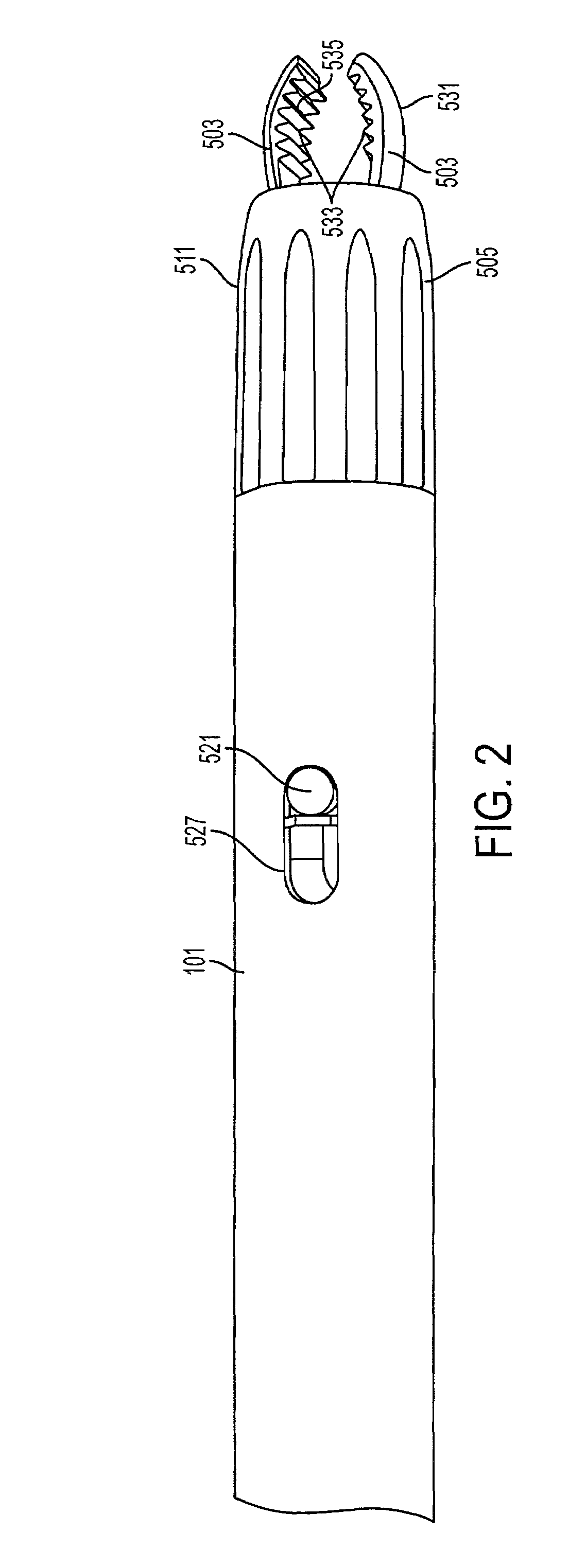Blunt Dissection and Tissue Elevation Instrument
a tissue elevation and blunt technology, applied in the field of blunt tissue dissection and tissue elevation instruments, can solve the problems of traumatic injury or death, particularly dangerous situations, and achieve the effects of atraumatic blunt tissue dissection and/or elevation during surgery, improved functionality and visibility, and efficient operation
- Summary
- Abstract
- Description
- Claims
- Application Information
AI Technical Summary
Benefits of technology
Problems solved by technology
Method used
Image
Examples
Embodiment Construction
)
[0028]The following detailed description illustrates by way of example and not by way of limitation. Described herein, among other things, are embodiments of medical devices for use in blunt elevation and / or dissection of tissue. The devices are particularly of use in cranial or spinal surgery but the type of surgery for which it is used is in no way limited to such surgeries. The device will generally be referred to herein as a “blunt dissection instrument” or simply a “blunt dissector” or “dissector” for ease of discussion. This terminology is not intended to limit its use solely to dissection as the device may be used for a number of activities including, but not limited to, tissue elevation and blunt dissection.
[0029]FIGS. 1-4 provide for drawings of a first embodiment of a blunt dissection instrument (100). FIGS. 5 and 6 provide for two additional embodiments. The embodiments will generally be discussed simultaneously and interchangeably as many of their functional structures ...
PUM
 Login to View More
Login to View More Abstract
Description
Claims
Application Information
 Login to View More
Login to View More - R&D
- Intellectual Property
- Life Sciences
- Materials
- Tech Scout
- Unparalleled Data Quality
- Higher Quality Content
- 60% Fewer Hallucinations
Browse by: Latest US Patents, China's latest patents, Technical Efficacy Thesaurus, Application Domain, Technology Topic, Popular Technical Reports.
© 2025 PatSnap. All rights reserved.Legal|Privacy policy|Modern Slavery Act Transparency Statement|Sitemap|About US| Contact US: help@patsnap.com



